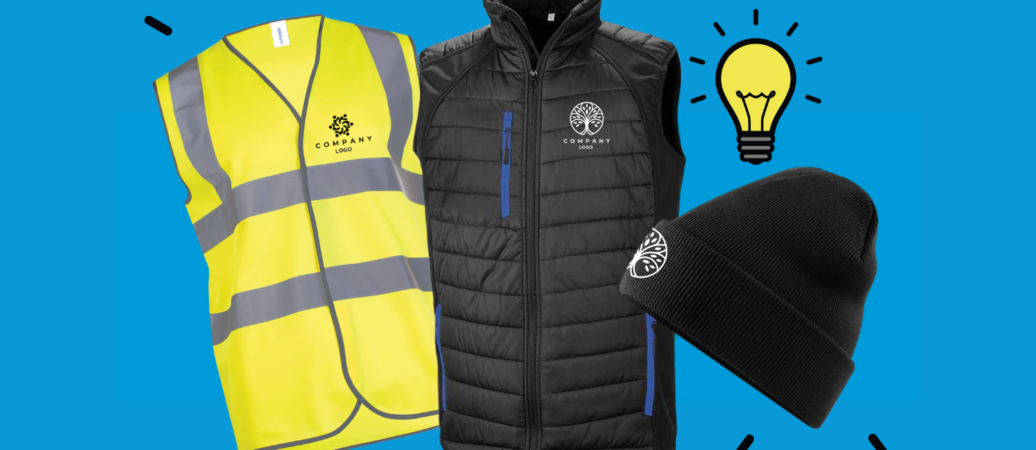Common Fabric Types Used in Branded Clothing and What They Mean
Common Fabric Types Used in Branded Clothing and What They Mean
Blog Article
The Importance of Lasting Apparel: Just How It Affects the Setting and Your Wardrobe
Lasting apparel is progressively recognized for its crucial function in minimizing the environmental influence of the rapid apparel industry. By concentrating on environmentally friendly materials and ethical production techniques, it deals with pushing ecological problems. This change not only profits the planet yet also influences customer options, causing an extra thoughtful strategy to closet monitoring. Comprehending these characteristics elevates necessary questions concerning fashion's future and individual responsibility in forming it.
The Ecological Impact of Quick Fashion

Benefits of Sustainable Products
Sustainable materials supply substantial benefits, specifically with environment-friendly textile options that decrease environmental injury. These products also demonstrate durability and durability, lowering the requirement for frequent replacements. Therefore, they add to an extra sustainable style industry and advertise accountable consumer actions.
Eco-Friendly Fabric Options
While the garment industry has long been related to rapid fads and environmental damage, the surge of environmentally friendly material choices provides a transformative opportunity. Lasting materials such as natural cotton, hemp, and Tencel have obtained appeal because of their lower environmental effect. These materials are often produced without dangerous pesticides and require much less water, reducing their carbon impact - Branded Clothing. Furthermore, lots of eco-friendly fabrics are naturally degradable, adding to a circular economic climate by lessening waste. Picking sustainable materials not just supports eco accountable practices however additionally advertises much healthier communities. As consumers come to be more aware of their acquiring power, the demand for environmentally friendly fabrics encourages brand names to introduce and embrace more lasting production techniques, eventually profiting the earth and future generations
Longevity and Longevity Benefits
Many customers are progressively recognizing the toughness and long life benefits of sustainable materials in their clothing choices. Unlike conventional materials, sustainable products such as organic cotton, hemp, and recycled polyester are crafted to hold up against wear and tear, causing garments that last longer. This minimized regularity of substitute not just conserves consumers money gradually but likewise lessens waste produced by fast style. In addition, sustainable clothes often utilizes eco-friendly production techniques that boost material stamina, adding to a reduction in the general carbon impact. By buying resilient clothing, customers can grow a more lasting wardrobe while delighting in high-quality pieces that keep their visual and performance over time. Longevity and durability stand as key benefits of selecting sustainable products.
Reducing Waste With Sustainable Practices
Minimizing waste in the fashion business can be achieved through ingenious methods such as upcycling and repurposing materials. Additionally, taking on minimalist closet techniques urges consumers to prioritize high quality over amount, inevitably reducing garments usage. Together, these approaches contribute significantly to a more sustainable garments model.
Upcycling and Repurposing Materials
Upcycling and repurposing materials have actually emerged as ingenious methods in the fashion industry, changing thrown out textiles into important new products. This strategy not only reduces waste however also encourages creative thinking and uniqueness in garments layout. By taking old garments and materials, designers can create one-of-a-kind items that show individual style while minimizing the demand for new resources. Furthermore, upcycling typically requires less power and water contrasted to traditional manufacturing procedures, considerably decreasing the ecological impact of fashion. As customers come to be a lot more knowledgeable about sustainability, the appeal of upcycled clothes remains to rise, advertising a circular economic climate. Eventually, these practices add to a much more sustainable future, where fashion prioritizes ecological health over rapid production and consumption.

Minimalist Closet Techniques
As individuals increasingly seek to reduce their environmental effect, taking on minimalist wardrobe strategies has actually gotten grip as an efficient technique to sustainable style. These approaches emphasize top quality over amount, motivating customers to curate a smaller sized collection of functional, sturdy garments. By focusing on classic items that can be blended and matched, individuals can decrease the frequency of acquisitions and ultimately lower waste.Additionally, minimalism promotes mindful usage, prompting shoppers to review the ecological and honest ramifications of their selections. This method not just promotes a more lasting way of living however additionally simplifies daily decision-making regarding clothes. As people embrace minimal principles, they add to a fashion society that values sustainability and liable consumerism, ultimately leading to a more eco-conscious society.
The Duty of Moral Labor in Lasting Fashion
While numerous consumers are significantly aware of the ecological effects of their clothing selections, the value of honest labor techniques in lasting style can not be forgotten. Ethical labor includes reasonable earnings, safe working conditions, and regard for workers' civil liberties, developing the foundation of liable style manufacturing. Brand names that prioritize honest labor not only boost areas but likewise established a criterion for liability in the industry.Moreover, the integration of moral methods fosters openness, enabling consumers to make informed selections concerning their acquisitions. This method contrasts sharply with rapid style's exploitative labor designs, which often prioritize revenue over people. By sustaining companies devoted to honest labor, customers contribute to a system that values human self-respect along with environmental sustainability. Ethical labor is not merely an add-on; it is important to the more comprehensive objective of sustainable style, making sure that the quest for eco-friendliness does not come at the expense of human civil liberties.
The Impact of Sustainable Apparel on Carbon Emissions
Sustainable garments has the possible to significantly decrease carbon emissions connected with the fashion business. Standard garment production adds especially to greenhouse gas emissions, largely because of energy-intensive manufacturing processes and using non-renewable resources. In contrast, lasting fashion concentrates on eco-friendly products, such as organic cotton or recycled fibers, which commonly call for much less energy to produce.Moreover, sustainable brands often tend to take on much more efficient manufacturing techniques, lessening waste and lowering total discharges. By prioritizing toughness and timeless design, lasting garments encourages customers to acquire much less often, further reducing the carbon footprint connected with overconsumption.Additionally, many lasting brand names are devoted to transparency in their supply chains, enabling customers to make informed selections that line up with their worths. Inevitably, moving towards sustainable garments can result in a considerable decrease in carbon discharges, adding to a healthier world and a much more lasting future for the apparel industry.
Sustaining Local Economies With Lasting Options
The shift towards sustainable clothes not only addresses ecological problems but additionally considerably benefits regional economic situations. By selecting sustainable fashion, consumers often support small businesses and regional craftsmens, improving community strength. These business typically operate a smaller scale, focusing on craftsmanship and moral techniques over mass production.Investing in locally made lasting garments cultivates job production and boosts economic development within areas. As customers end up being extra knowledgeable about the ecological influence of their acquisitions, they significantly choose products that reflect their values. This need encourages neighborhood producers to adopt sustainable techniques, adding to a circular economy.Moreover, supporting local companies reduces transportation emissions, straightening with eco-conscious consumer actions. The interconnectedness of sustainable garments and neighborhood economic climates emphasizes the essential role that specific selections play in advertising both ecological and economic wellness. By fostering my link these local links, areas can thrive while likewise functioning in the direction of a more lasting future.
Changing Your Storage Room: Tips for a Lasting Wardrobe
As individuals seek to reduce their environmental impact, changing a closet right into a lasting wardrobe comes to be a crucial step. One reliable technique is to review existing clothes, keeping only things that are worn routinely which line up with sustainability goals. Focusing on quality over amount is vital; spending in resilient items from environmentally friendly brand names can significantly lower waste.Additionally, incorporating used items can revive a closet while minimizing environmental damage. Organizing apparel swaps with buddies or contributing extra items can even more promote sustainability.When buying, people need to seek materials that are organic, recycled, click for more or naturally degradable, and prevent rapid style sellers - Branded Clothing. Practicing mindful usage by thoughtfully thinking about each purchase can contribute to a more lasting way of living. By carrying out these suggestions, one can produce a closet that mirrors personal style while sustaining ecological stewardship
Regularly Asked Inquiries
Exactly How Can I Identify Sustainable Clothing Brands?
To identify sustainable clothes brands, one ought to research materials utilized, inspect for qualifications like Fair Profession, and examine the brand's transparency about their manufacturing procedures, labor practices, and environmental influence, guaranteeing ethical and eco-friendly methods are prioritized.
What Are the Costs Linked With Sustainable Fashion?
The costs related to lasting fashion can differ substantially. Higher production expenditures, honest sourcing, and environmentally friendly products typically result in increased list prices, which may deter some customers while appealing to eco mindful consumers.
Can Lasting Clothes Be Trendy and Stylish?
Lasting clothes can certainly be stylish and trendy. Designers significantly prioritize innovative products and ethical manufacturing methods, confirming that fashion and sustainability can exist side-by-side. Consumers now have varied alternatives that blend aesthetic appeals with ecological consciousness.
Exactly How Does Washing Clothes Affect Their Sustainability?
Cleaning garments greatly impacts sustainability by consuming water and energy, adding to pollution, and creating microplastic release. Regular cleaning can degrade materials, reducing their life-span and increasing the requirement for substitutes, inevitably intensifying ecological worries.
What Is the Lifespan of Sustainable Garments Contrasted to Rapid Style?
The lifespan of sustainable clothes typically surpasses that of quick style items, typically lasting several years due to high quality materials and craftsmanship. In contrast, quick fashion garments may deteriorate rapidly, requiring more regular replacements. Lasting apparel is increasingly recognized for its important duty in lessening the environmental effect of the quick fashion market. While lots of customers are significantly mindful of the ecological consequences of their apparel selections, the significance of moral labor methods in sustainable style can not be forgotten. Branded Clothing. Sustainable apparel has the prospective to considerably reduce carbon emissions associated with the style sector. In comparison, sustainable fashion focuses on environment-friendly products, such as natural cotton or recycled fibers, which frequently require less energy to produce.Moreover, lasting brands tend to embrace extra reliable production practices, decreasing waste and lowering overall discharges. By focusing on sturdiness and classic layout, lasting apparel motivates customers to purchase less regularly, additional reducing the carbon impact associated with overconsumption.Additionally, lots of lasting brands are committed to transparency in their supply chains, making it possible for consumers to make enlightened choices that straighten with their dig this values
Report this page